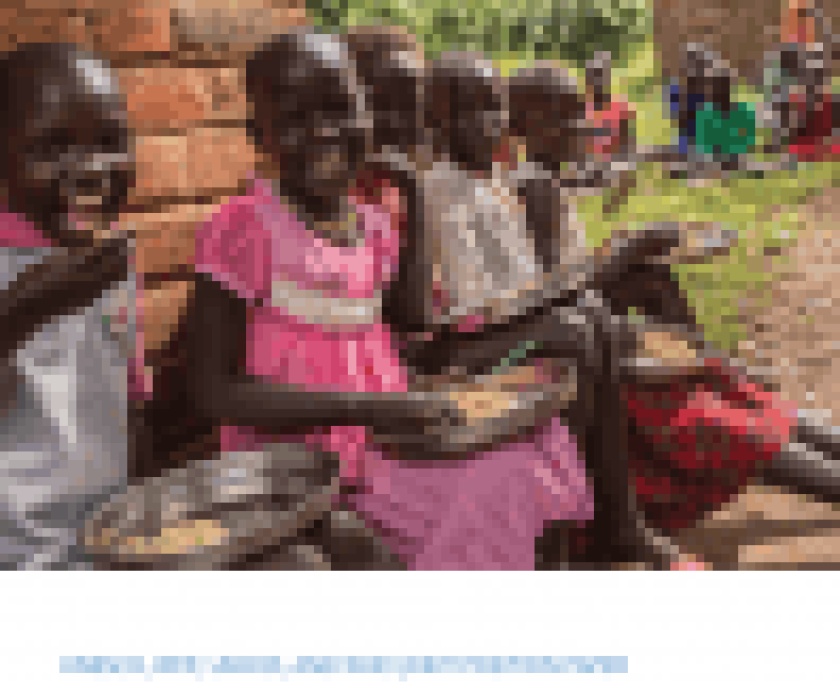HIGHLIGHTS
• Since 1 December 2019, almost 350,000 people fled from their homes, mainly from southern Idleb governorate, moving further north away from the hostilities.
• Most of the recently displaced people moved to urban centres and IDP camps in northwestern Idleb. Tens of thousands have reportedly moved to areas such as Afrin and A’zaz in northern Aleppo governorate seeking safety and access to services.
• An unstable security situation prevails with daily reports of bombardments, affecting civilian infrastructure, such as schools and IDP camps.
• Displacement during winter is further exacerbating the vulnerability of those affected. Many who fled are in urgent need of humanitarian support, particularly shelter, food, health, non-food and winterization assistance.
SITUATION OVERVIEW
The hostilities in northwest Syria continue to impact heavily on civilians who have endured nine years of crisis, violence, multiple displacements and economic downturn. The humanitarian situation, particularly in the Idleb de-escalation area, continues to deteriorate as a result of the hostilities that escalated in late 2019. From 1 December 2019 to 14 January 2020, almost 350,000 people were displaced in northwest Syria, mostly from southern parts of Idleb area, 80 percent of whom are women and children. Many fled their homes within the space of hours without any belongings while others managed take with them what they needed to survive, believing that they would not be coming back. The majority of those newly displaced have stayed within the Idleb area, moving to either urban centres such as Idleb city or Ariha or to areas that already have significant IDP populations such as Dana, Maaret Tamsrin and Atareb. Some 45,000 of newly displaced individuals chose to move to areas in northern Aleppo governorate to seek safety and to reach services. In 2019, 910 incidents of indirect artillery fire hit different residential areas in Aleppo city killing 64 civilians and injuring 273 people. A further three projectiles were recorded in January 2020.
Yet, those who fled their homes in southern Idleb due to hostilities continue to be deeply affected by the violence. On 15 January, local sources reported airstrikes hit Idleb city, Ariha, Ma’arrat An Nu’man, Kafr Nobol and Khan Elsobol, with initial reports of civilian casualties coming in. On 11 January, intensive airstrikes once again hit areas such as Idleb city, Bennsh, Sarmin and Nayreb, reportedly killing 21 civilians -including 8 children and 5 women- and injuring some 75 people. Moreover, local and media sources reported that shelling hit areas close to the frontlines in GoS-held areas, including in Aleppo city, resulted in the death of several civilians and injuring many others. Between 29 April, 2019 and 5 January, 2020, OHCHR recorded the deaths of 1,460 civilians, including 417 children, as a result of the military escalation in Idleb, Hama and Aleppo.
As the fluidity of the security situation persists across Idleb area, civilians are faced with difficult decisions about staying where they are, moving to areas that they believe are safer or back to their home communities. Given the unpredictability surrounding the hostilities, many civilians, particularly those who live in areas close to the frontlines in western Aleppo countryside in Idleb area, are worried that ground fighting may affect their communities next and are ready to move on a short notice. Following the announcement of a ceasefire over the weekend of 11-12 January, local sources reported that some civilians began returning to their communities in southern parts of Idleb area. Then with the announcement of the opening of three crossing points between NSAG-controlled Idleb area and GoS-controlled areas, local sources reported that at least 70 civilians crossed into GoS-controlled areas.
Following the displacement, the humanitarian response for the affected population focuses on life-saving assistance such as food support and shelter, people’s needs across sectors are growing exponentially at arrival locations. This evolving complexity and vulnerability adds strain on the provision of humanitarian assistance. The dynamic situation brings additional challenges to the response to people’s needs, as the displacement patterns can rapidly change.
Commensurate with the needs of both the newly displaced and host populations, the humanitarian actors are scaling up their response, particularly in areas that have recently received IDPs. Humanitarian organizations that had suspended their operations in southern Idleb due to hostilities are now relocating their services to northern parts of Idleb to the extent possible. Moreover, those humanitarian actors who were already operating in these areas are expanding their programming to reach newly displaced people.
However, the rapid displacement as well as the previously existing needs on the ground mean more resources are needed to support all those in need in northern Syria. The current crisis compounds an already dire humanitarian situation in northwest Syria where an estimated 400,000 people have been displaced between May and August 2019. Four million people live in northwest Syria, of which 2.8 are estimated to be in need of humanitarian assistance. Women and children are estimated to make up for the 76 percent of this population. The main needs of the most recently displaced individuals, as reported by the CCCM, are non-food items, shelter, food and cash assistance. Currently, almost half of those newly displaced are living with host families and rented houses while 32 percent are living in camps or individual tents. In particular, the winter weather is adding another layer of urgency to the situation with flooding frequently affecting camps and informal settlements and many families seeking shelter in unfinished buildings.
With the displacement movement slowing, the needs of newly displaced and host communities across all sectors will emerge more on clearly beyond the emergency assistance, such as health services for chronic illnesses and maternal care. Additional education assistance for tens of thousands of newly displaced children who could not attend school for the most part of the semester, if not for several years, will be needed to support these children.



